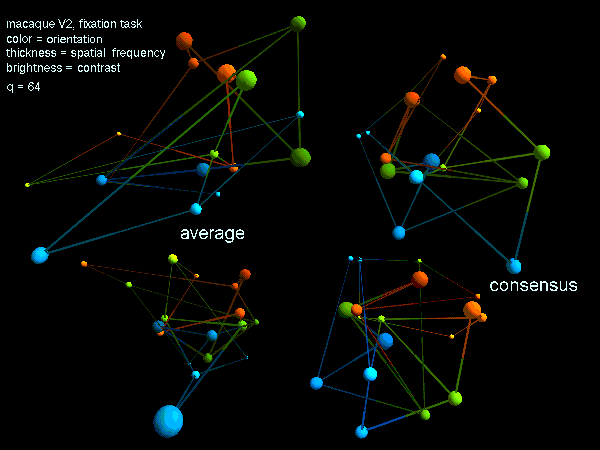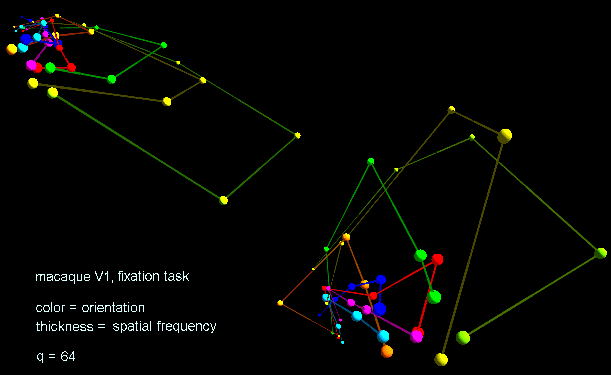
We describe a novel approach to the study of how spike trains encode sensory information. This approach emphasizes the idea that spike trains are sequences of discrete events, rather than approximations to continuous signals. Aided by some simple heuristics, such as a caricature of neurons as coincidence detectors, we construct candidate notions of " distances" between spike trains, considered as points in an abstract space. Each candidate distance is evaluated for relevance to biological encoding by determining whether it leads to systematic, stimulus-dependent, clustering of the neural responses. We show here that these distances can also be used to construct a "response space" for the neuron. The response space, which is typically not Euclidean, can represent two or three stimulus attributes. We also introduce the notion of a "consensus spike train", defined as the spike train with minimum average distance from a set of observed responses. For the distances we consider, the consensus spike train (for a particular stimulus) contains only those spikes which are present at consistent times across the observed responses to that stimulus, and thus contains fewer spikes than the typical observed responses. Nevertheless, these consensus spike trains provide an equivalent (or even superior) representation of the stimulus array.
 Gratings were transiently
presented to a V1 neuron at 8 orientations and
5 spatial frequencies.
16 responses to each of the stimuli were recorded.
Multidimensional scaling, based on the
metric
Dspike[64], was performed.
Each point corresponds to the centroid of the locus of responses
for one of the 40 stimuli. Stimulus orientation is
rendered by color (red = 0 deg, orange = 22.5 deg, yellow = 45 deg, yellow-green = 67.5 deg,
green = 90 deg, cyan = 112.5 deg, blue = 135 deg, violet = 157.5 deg), and spatial frequency (1, 3, 5, 11, and
21 c/deg) is rendered by line thickness and sphere size (thick lines and large spheres for lowest spatial
frequency).
Gratings were transiently
presented to a V1 neuron at 8 orientations and
5 spatial frequencies.
16 responses to each of the stimuli were recorded.
Multidimensional scaling, based on the
metric
Dspike[64], was performed.
Each point corresponds to the centroid of the locus of responses
for one of the 40 stimuli. Stimulus orientation is
rendered by color (red = 0 deg, orange = 22.5 deg, yellow = 45 deg, yellow-green = 67.5 deg,
green = 90 deg, cyan = 112.5 deg, blue = 135 deg, violet = 157.5 deg), and spatial frequency (1, 3, 5, 11, and
21 c/deg) is rendered by line thickness and sphere size (thick lines and large spheres for lowest spatial
frequency).

Left, labelled "average": two views of multidimensional scaling of responses of a V2 neuron to gratings presented in each of 2 contrasts, 3 spatial frequencies, and 3 orientrations. The metric used is Dspike[64]. Each point corresponds to the centroid of the locus of responses for one of the 18 stimuli. Stimulus contrast (0.5 and 1.0) is rendered by brightness (bright spheres for higher contrast), spatial frequency (3, 5, and 11 c/deg) is rendered by line thickness and sphere size (thick lines and large spheres for lowest spatial frequency), and orientation is rendered by color (orange = 0 deg, green = 22.5 deg, blue = 45 deg). Right, labelled "consensus": multidimensional scaling of the corresponding consensus response sequences.
Credit for consensus algorithm and implementation: Aaron Hoffman and Matt Tepel.